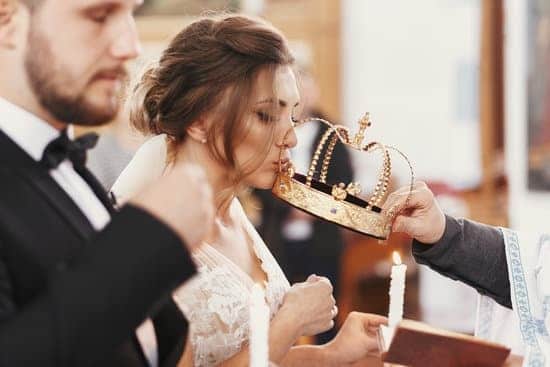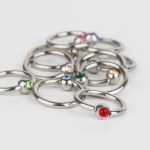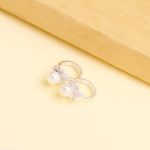African bead jewelry designs hold a rich cultural heritage and beauty that showcases the diversity of African artistry. From intricate patterns to vibrant colors, these jewelry pieces are not just accessories but also symbols of tradition and identity. The craftsmanship and unique aesthetic appeal of African bead jewelry have captured the attention of people worldwide, making them highly sought after in the fashion industry.
For centuries, African bead jewelry has been an integral part of various African cultures, representing different meanings, beliefs, and occasions. Each piece tells a story about the wearer’s heritage, status, or personal journey. The use of beads in jewelry-making dates back to ancient times, with each design reflecting the artistic traditions and skills passed down through generations.
From extravagant necklaces to delicate bracelets, African bead jewelry comes in a wide range of styles and designs. Whether it’s made from recycled glass beads in Ghana or handcrafted ceramic beads in Nigeria, each piece carries its own unique charm and character. The meticulous process of creating these jewelry pieces involves intricate techniques that require patience, skill, and creativity.
History and Cultural Significance of African Bead Jewelry
African bead jewelry designs have a rich history that dates back centuries, playing a significant role in various African cultures. The art of beadwork has been passed down through generations, with each piece telling a story and holding cultural significance. Beads were not only used for adornment but also served as symbols of status, spirituality, and protection in many African societies.
The use of beads in African jewelry can be traced back to ancient times, where they were crafted from natural materials such as clay, bone, seeds, and shells. As trade routes expanded across the continent, glass beads became popular additions to traditional designs. The intricate craftsmanship and vibrant colors of African bead jewelry have captivated people around the world, highlighting the skilled workmanship and creativity of African artisans.
In different regions of Africa, specific bead patterns and designs hold unique meanings that are deeply rooted in the culture and traditions of the people. For example, certain colors may represent fertility, prosperity, healing, or spiritual beliefs.
Additionally, beads were often used in ceremonies and rituals to mark important milestones such as weddings, births, or coming-of-age ceremonies. Understanding the history and cultural significance behind African bead jewelry designs adds depth to their beauty and enhances appreciation for these timeless pieces.
- Traditional African bead jewelry embodies stories
- Beads made from natural materials hold cultural significance
- Trade routes introduced glass beads to traditional designs
Different Types of Beads Used in Traditional African Jewelry
African bead jewelry designs are known for their vibrant colors, intricate patterns, and cultural significance. One of the key elements that contribute to the uniqueness of African bead jewelry is the wide variety of beads used in their creation. These beads come in different shapes, sizes, materials, and colors, each holding its own symbolic meaning and history within the African culture.
To better understand traditional African jewelry designs, it is essential to explore the different types of beads commonly used in their making. Here are some of the most popular types of beads found in traditional African bead jewelry:
- Seed Beads: Seed beads are tiny glass or metal beads that are often used for intricate beadwork and embroidery in African jewelry.
- Trade Beads: Historically used as a form of currency during trade between Africa and Europe, trade beads are now commonly incorporated into African jewelry designs for their historical significance.
- Bone Beads: Made from animal bones, bone beads are often carved into various shapes and sizes to create unique patterns in African bead jewelry.
Moreover, other types such as glass beads, metal beads,sandcast & recycled plastic beads play an important role in traditional african bead jewelries because they were introduced through colonial links.
Overall, understanding the different types of beads used in traditional African jewelry provides insight into the rich cultural heritage and artistic craftsmanship that goes into creating these stunning pieces. The use of these diverse beads not only adds beauty to the jewelry but also reflects a deep connection to African traditions and history.
Techniques and Process of Making African Bead Jewelry
Traditional Bead-Making Techniques
African bead jewelry designs have a long history of being intricately handmade using traditional techniques passed down through generations. One of the most common methods is handcrafting beads from natural materials such as clay, bone, wood, seeds, and glass. Each bead is carefully shaped, polished, and painted to create unique patterns and designs.
Another technique involves stringing beads onto a thread or wire to form necklaces, bracelets, and earrings. This meticulous process requires patience and skill to ensure that each piece is a work of art.
Unique Processes in African Bead Jewelry Making
In addition to traditional bead-making techniques, certain African tribes have developed their unique processes for creating intricate bead jewelry. For example, the Maasai tribe in Kenya and Tanzania uses vibrant colors and patterns in their beaded jewelry known for its symbolic significance.
They often incorporate intricate beadwork into their clothing and accessories as a form of cultural expression. Other tribes like the Zulu in South Africa are known for their use of colorful beaded patterns in their traditional attire for ceremonies and celebrations.
Innovations in Contemporary African Bead Jewelry
As African bead jewelry designs continue to evolve, contemporary artisans are experimenting with new techniques and materials to create modern interpretations of traditional styles. Some designers combine traditional beadwork with metals such as silver or gold to add a touch of luxury to their pieces.
Others incorporate recycled materials like plastic beads into their designs as a sustainable practice. These innovative approaches not only showcase the creativity of African artisans but also highlight the adaptability of African bead jewelry in the ever-changing fashion landscape.
Popular African Bead Jewelry Designs and Styles
African bead jewelry designs encompass a wide range of styles and patterns that have been influenced by the diverse cultures and traditions across the continent. One popular style of African bead jewelry is the Maasai beadwork, known for its vibrant colors and intricate patterns. The Maasai people of Kenya and Tanzania use brightly colored beads to create stunning necklaces, bracelets, and earrings that are often worn during special ceremonies and celebrations.
Another notable African bead jewelry design is the Krobo beads from Ghana. These beads are made from recycled glass, giving them a unique texture and appearance. Krobo bead jewelry often features geometric patterns and bold colors, reflecting the artistic flair of the Krobo people. These beads are commonly used in both traditional and contemporary African jewelry pieces.
In addition to Maasai and Krobo beads, other popular designs in African bead jewelry include Fulani earrings from West Africa, Ethiopian prayer beads, Zulu love letter necklaces from South Africa, and Berber silver bead necklaces from North Africa. Each of these styles showcases the creativity and craftsmanship of African artisans who have been creating beautiful beadwork for generations.
Whether it’s a statement necklace or a delicate pair of earrings, African bead jewelry designs offer a unique blend of tradition and elegance that can elevate any outfit.
Colors and Symbolism in African Bead Jewelry
African bead jewelry designs are not only visually stunning but also hold deep cultural and symbolic meanings. The colors used in African bead jewelry play a significant role in representing various aspects of life, spirituality, and traditions. Each color is carefully chosen to convey specific messages and emotions, making these pieces not just accessories but intricate storytelling tools.
Symbolism of Colors
In traditional African bead jewelry designs, each color holds its own symbolism. For example, red often represents passion, vitality, and courage; black symbolizes strength, power, and protection; white signifies purity, innocence, and spirituality; blue is associated with peace, wisdom, and tranquility. By understanding the symbolism behind these colors, wearers of African bead jewelry can connect more deeply with the stories and traditions they represent.
Combination of Colors
The combination of colors in African bead jewelry designs is also essential. Different color combinations can evoke specific cultural beliefs or celebrate significant events. For instance, a combination of red and black beads may symbolize a coming-of-age ceremony or initiation ritual within a community. Understanding the meanings behind these color combinations adds layers of depth to the beauty of African bead jewelry pieces.
Contemporary Trends in African Bead Jewelry Designs
African bead jewelry designs have evolved over the years, blending traditional techniques with modern styles to create unique pieces that appeal to a wider audience. One of the current trends in African bead jewelry is the use of vibrant colors and intricate patterns that reflect the rich cultural heritage of Africa. Designers are incorporating traditional African motifs such as tribal symbols, geometric shapes, and animal prints into their jewelry to capture the essence of African culture.
Another popular trend in contemporary African bead jewelry designs is the use of mixed materials. Designers are experimenting with combining beads made from different materials such as glass, metal, wood, and clay to create eclectic pieces that showcase the diversity of African craftsmanship. This fusion of materials adds depth and texture to the jewelry, making it visually striking and appealing to fashion-forward consumers.
In addition to traditional motifs and mixed materials, contemporary African bead jewelry designs also draw inspiration from nature. Some designers are incorporating natural elements such as shells, pearls, and gemstones into their pieces to create organic and earthy designs that connect wearers to the beauty of the natural world. These nature-inspired pieces are not only aesthetically pleasing but also carry a deeper meaning related to environmental awareness and sustainability.
| Trend | Description |
|---|---|
| Vibrant Colors | Incorporation of vibrant colors and intricate patterns reflecting African cultural heritage. |
| Mixed Materials | Experimentation with combining beads made from glass, metal, wood, clay for eclectic pieces. |
| Nature-Inspired | Incorporating natural elements like shells, pearls, gemstones for organic designs connecting wearers to nature. |
Buying Guide for Authentic African Bead Jewelry
African bead jewelry has a rich history and cultural significance that dates back centuries. Each piece of African bead jewelry is carefully crafted using traditional techniques that have been passed down through generations. When looking to purchase authentic African bead jewelry, there are several factors to consider to ensure that you are getting a quality and genuine piece.
One of the most important things to look for when buying African bead jewelry is the type of beads used in the design. Traditional African bead jewelry often features beads made from materials such as glass, wood, bone, clay, or shells. These materials are not only visually appealing but also hold deep cultural and symbolic meanings within African communities.
In addition to the materials used, it is essential to pay attention to the craftsmanship and design of the piece. Authentic African bead jewelry is often handcrafted by skilled artisans who take great pride in their work.
Look for intricate patterns, unique color combinations, and attention to detail when selecting a piece of African bead jewelry. By supporting local artisans and purchasing handmade pieces, you are not only investing in a beautiful accessory but also helping preserve a centuries-old craft.
| Materials | Meanings |
|---|---|
| Glass | Spirituality and protection |
| Wood | Nature and growth |
| Bone | Ancestral connections |
Care and Maintenance Tips for African Bead Jewelry
African bead jewelry designs are not only beautiful pieces of adornment but also hold cultural and historical significance. To maintain the beauty and longevity of these unique pieces, proper care and maintenance are essential.
One important tip for caring for African bead jewelry is to avoid exposing them to harsh chemicals such as perfume, hairspray, or lotions, as these can damage the beads and affect their color and shine. It is also advisable to remove African bead jewelry before engaging in activities such as swimming or exercising to prevent damage.
Proper storage is another crucial aspect of maintaining African bead jewelry. Storing them in a cool, dry place away from direct sunlight can help prevent the colors from fading and ensure that the beads remain in good condition. It is recommended to store each piece separately in a soft cloth pouch or a jewelry box to avoid scratching or tangling with other pieces.
Regular cleaning is also important in preserving the beauty of African bead jewelry designs. A gentle clean with a soft, damp cloth can help remove any dust or dirt that may have accumulated on the beads.
Avoid using harsh cleaning agents or abrasive materials that can scratch or damage the beads. By following these care and maintenance tips, you can enjoy your African bead jewelry for years to come while keeping them looking as stunning as the day you acquired them.
Conclusion
In conclusion, African bead jewelry designs have a rich history and cultural significance that transcends time and borders. The intricate craftsmanship and symbolism behind each piece reflect the vibrant traditions and heritage of various African communities. From the use of natural materials like glass, metal, clay, and bone to the elaborate techniques passed down through generations, African bead jewelry stands as a testament to the creativity and artistry of its makers.
The variety of colors and symbols present in African bead jewelry designs add a deeper layer of meaning to each piece. Whether it’s a symbol of status, protection, fertility, or spirituality, these elements bring forth a sense of connection to one’s roots and ancestors. Moreover, the contemporary trends in African bead jewelry designs showcase how this age-old craft continues to evolve and adapt to modern styles while keeping its authenticity intact.
As consumers, it is important to appreciate and support authentic African bead jewelry makers who uphold traditional techniques and values. By investing in genuine pieces, we not only enhance our style but also contribute to preserving an ancient art form that carries stories of resilience and beauty. Let us continue embracing the beauty and richness of African bead jewelry designs as a way to celebrate diversity, culture, and the enduring spirit of craftsmanship.
Frequently Asked Questions
What Do African Beads Symbolize?
African beads carry significant cultural symbolism across various tribes and regions on the continent. They often symbolize wealth, social status, spirituality, fertility, protection, and even rites of passage. The colors, patterns, shapes, and materials used in creating the beads all have specific meanings attached to them.
Which Tribe in Africa Is Famous for Their Beaded Jewellery?
The Maasai tribe of East Africa is well-known for their exquisite beaded jewelry. Their intricate beadwork reflects their rich cultural heritage and traditional craftsmanship. Maasai women use vibrant colored beads to create beautiful necklaces, bracelets, earrings, and headpieces that are not only aesthetically pleasing but also hold deep symbolic meanings within their community.
What Are the Different Types of African Beads?
There are several different types of African beads used in traditional jewelry-making. Some common types include glass trade beads historically used in the slave trade era as currency for goods and services; powder glass beads made by artisans using recycled glass bottles; seed beads crafted from natural materials like seeds or shells; metal beads forged from brass or copper; and stone beads carved from materials like turquoise or agate.
Each type of bead has its own unique history and significance within African cultures.

Welcome to my jewelry blog! My name is Sarah and I am the owner of this blog.
I love making jewelry and sharing my creations with others.
So whether you’re someone who loves wearing jewelry yourself or simply enjoys learning about it, be sure to check out my blog for insightful posts on everything related to this exciting topic!





